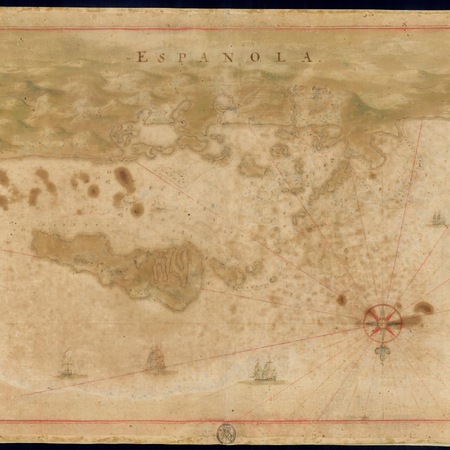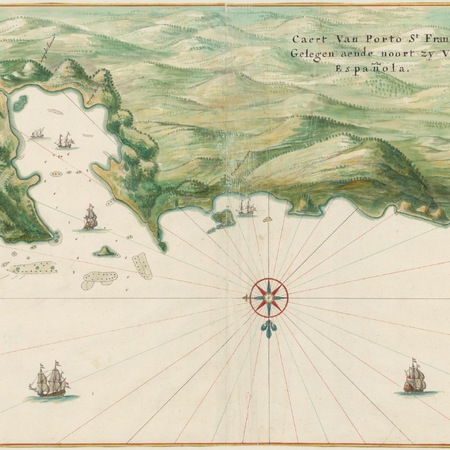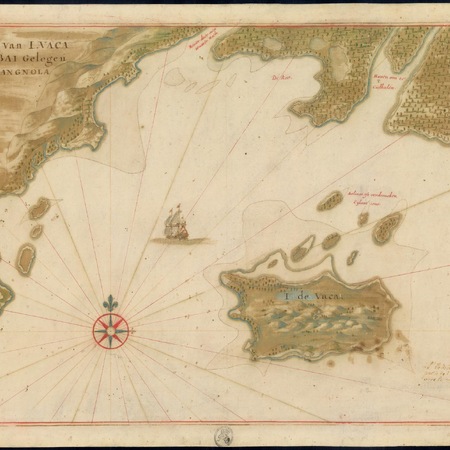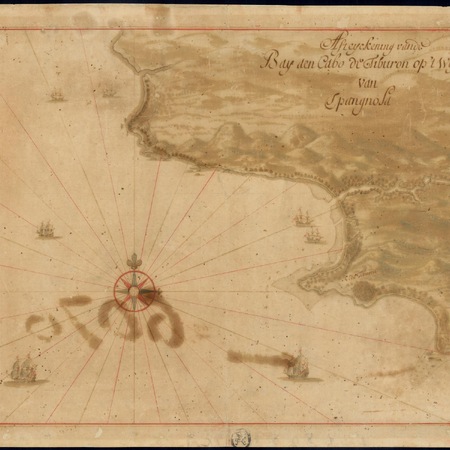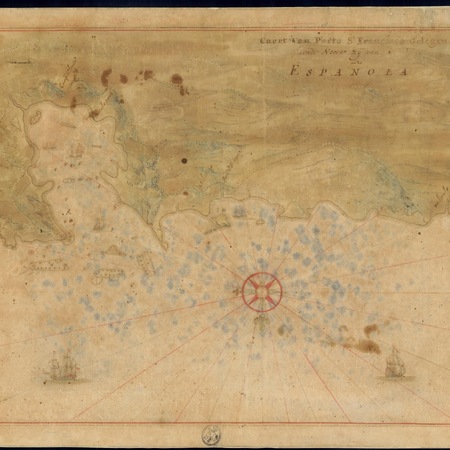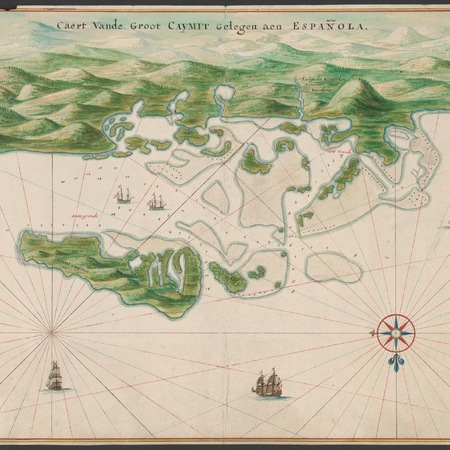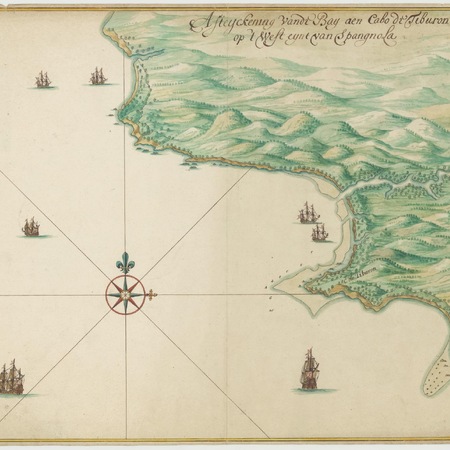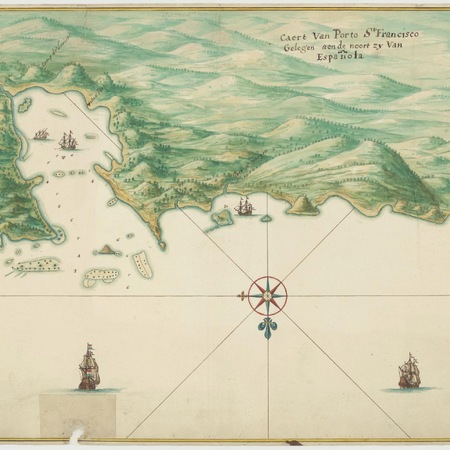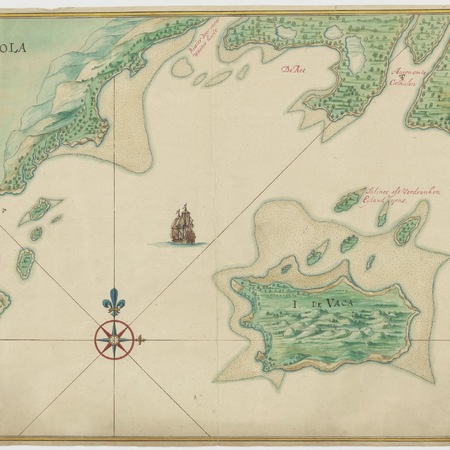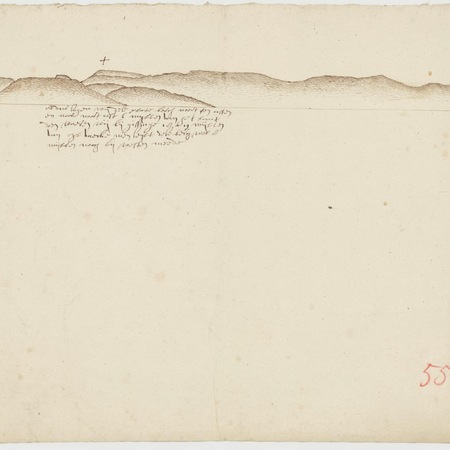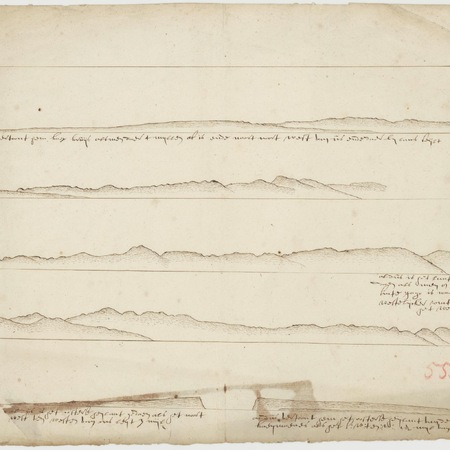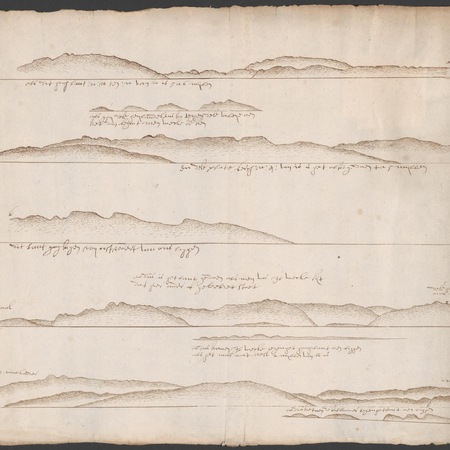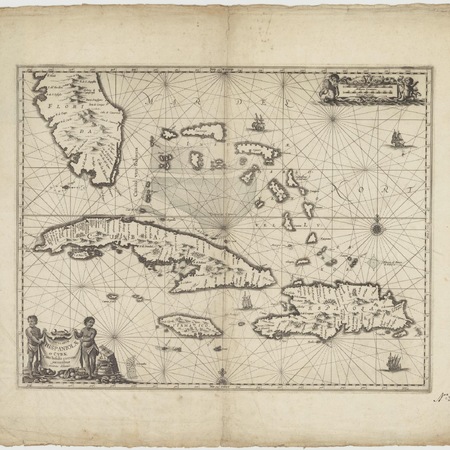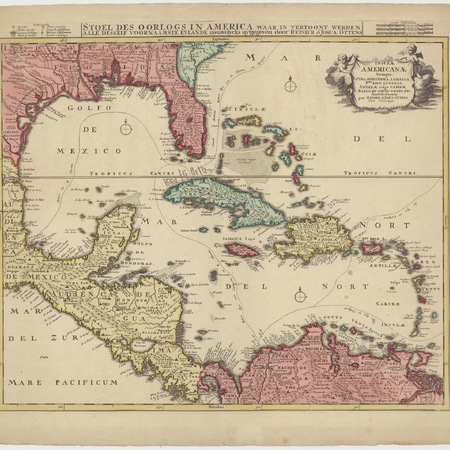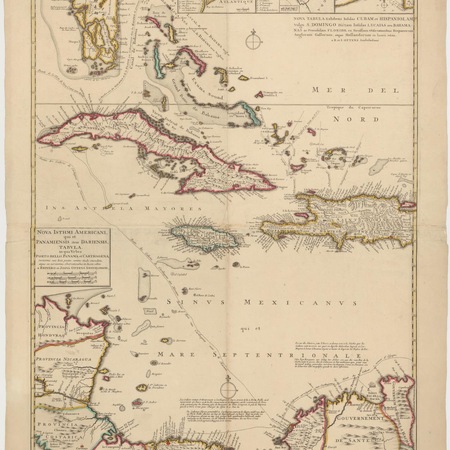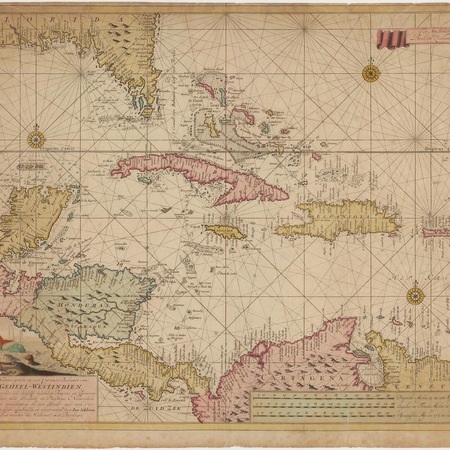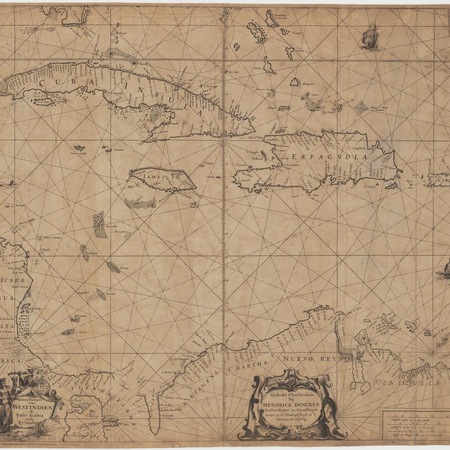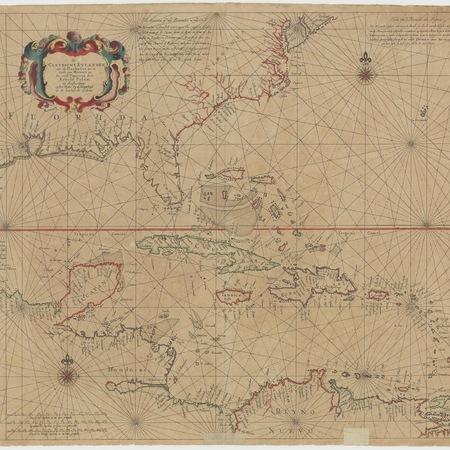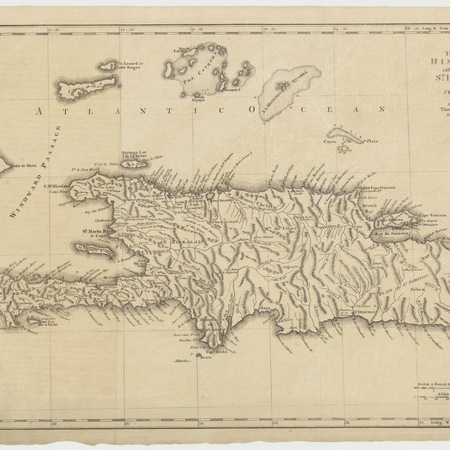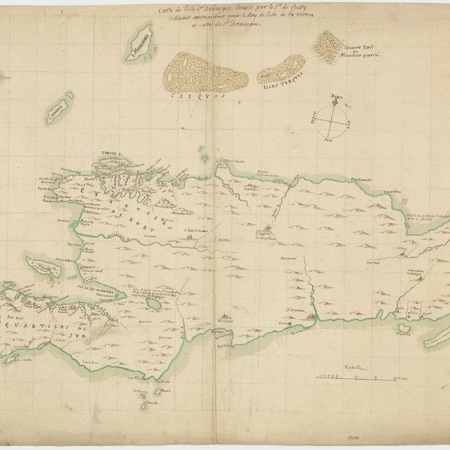Christopher Columbus landed on the island during his first voyage across the Atlantic in 1492, but in subsequent years, as Spain's attention shifted to the mainland. In the 17th century, pirates and privateers of various nationalities had bases on the island. In 1665, French colonization of the island was officially recognized by King Louis XIV and the the French colony was given the name Saint-Domingue. In the 1697 Treaty of Ryswick, Spain formally ceded the western third of the island to France. Saint-Domingue quickly came to overshadow the east in both wealth and population. Nicknamed the "Pearl of the Antilles," it became the richest and most prosperous colony in the West Indies.
During the French Revolution, Spain ceded the eastern two-thirds of the island of Hispaniola, later to become the Dominican Republic. The French side, meanwhile, revolted against Spanish rule and became the independent state of Haiti.
